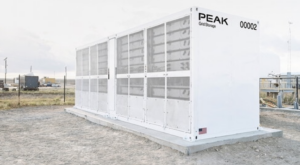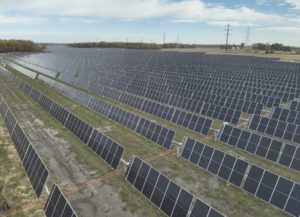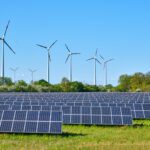There has been significant outrage from the left around changes the Trump administration has made since taking office, including actions that specifically affect the power industry. Yet, it’s not uncommon for an administration to make energy policy changes after a new president assumes power.
Some Change Is Normal
When Ronald Reagan became president in 1981, he dramatically reversed Jimmy Carter’s energy conservation policies. While Carter had installed solar panels on the White House and pushed for renewable energy development, Reagan removed the solar panels and emphasized deregulation of the energy industry, particularly oil and gas. He also significantly cut funding for renewable energy research.
The transition from Bill Clinton to George W. Bush in 2001 marked another major shift. Clinton had prioritized environmental regulations and supported the Kyoto Protocol on climate change. Bush withdrew the U.S. from the Kyoto Protocol and introduced an energy policy that emphasized increased domestic fossil fuel production, including controversial proposals for oil drilling in the Arctic National Wildlife Refuge (ANWR).
A particularly stark contrast occurred between the Obama and first Trump administration. Obama introduced the Clean Power Plan to reduce power plant emissions and signed the Paris climate agreement. When Trump took office in 2016, he withdrew from the Paris Agreement, repealed the Clean Power Plan, and pursued a U.S. “energy dominance” agenda that expanded fossil fuel development on public lands and rolled back various environmental regulations.
Trump’s Latest Actions
Of the 46 executive orders (EOs) and other presidential actions signed by Trump on his first day back in office, at least six have direct relevance to the energy industry. The declaration of a “national energy emergency,” is perhaps the most notable. It authorizes the expansion of domestic fossil fuel exploration and extraction, while directing federal agencies to streamline regulatory processes and accelerate energy infrastructure projects. The EO uses the term “energy” to include crude oil, natural gas, lease condensates, natural gas liquids, refined petroleum products, uranium, coal, biofuels, geothermal heat, the kinetic movement of flowing water, and critical minerals, but notably does not apply to wind and solar energy or batteries.
A memorandum signed by Trump calling for “Temporary Withdrawal of All Areas on the Outer Continental Shelf from Offshore Wind Leasing and Review of the Federal Government’s Leasing and Permitting Practices for Wind Projects” is also significant. It prohibits several federal agencies from issuing any new or renewed approvals, rights-of-way, permits, leases, or loans for onshore or offshore wind projects pending the administration’s assessment of the economic and environmental impact of wind leasing and permitting practices. The order also requires temporary withdrawal of offshore areas from offshore wind leasing.
Among other actions signed by Trump are the U.S.’s withdrawal from the Paris Agreement (again); a catch-all EO on energy, including a wide range of provisions intended to “unleash America’s affordable and reliable energy and natural resources”; an order to lift restrictions on oil, gas, and mineral production in Alaska, opening areas for development, including parts of the ANWR, and supporting the state’s aspiration to revive its liquefied natural gas (LNG) industry; and a mandate for government departments to look for ways to bring down prices for consumers, including scrapping climate policies that raise the cost of fuel. In addition to these actions, Trump has toyed with tariffs on imports, which will impact the energy industry. Some of the measures covered by Trump’s actions will have an immediate effect, while others will take time and could face legal challenges.
Possible Ramifications
Morgan Stanley hosted a series of meetings with several industry associations and former government officials following the inauguration to discuss climate and trade policy. The key takeaways included insight on prospects for the Inflation Reduction Act (IRA), implications of the tariffs, and outlooks for nuclear power and natural gas.
“We see a potentially bifurcated outcome with respect to IRA repeal, with a greater-than-appreciated probability that the IRA may remain intact,” Morgan Stanley Research speculated. The group acknowledged, however, that IRA repeal risk remains a key area of concern for clean energy investors. “Our base case for IRA-related spending remains intact: expect efforts to challenge or delay disbursements through the executive branch, as well as potentially targeted repeal efforts/accelerated phase-outs as Republicans attempt to find offsets for tax-cut extensions, but broader repeal is a lower probability event,” the team of analysts, strategists, and researchers said.
Morgan Stanley expects tariffs to continue being used for leverage to reduce the trade deficit and increase the competitiveness of U.S. manufacturing. Meanwhile, the group said there is significant bipartisan support for nuclear power, as it is viewed as a critical source of reliable and clean power needed to support growing energy demand in the U.S. stemming from artificial intelligence and the onshoring of manufacturing. “The ADVANCE Act, which passed the Senate by a vote of 88–2, is clear evidence of this bipartisan support. This gives us confidence that if there were to be any changes to the IRA, the nuclear PTC [production tax credit] would likely be untouched,” the group said.
Concerning natural gas, Trump lifted the pause on new Department of Energy permits for LNG export facilities, easing the path for new facilities to advance. “Beyond LNG, the Trump administration may target a roll-back of greenhouse gas limits for new and existing power plants, potentially helping gas to take a larger share of electricity demand growth,” Morgan Stanley Research said.
—Aaron Larson is POWER’s executive editor.











